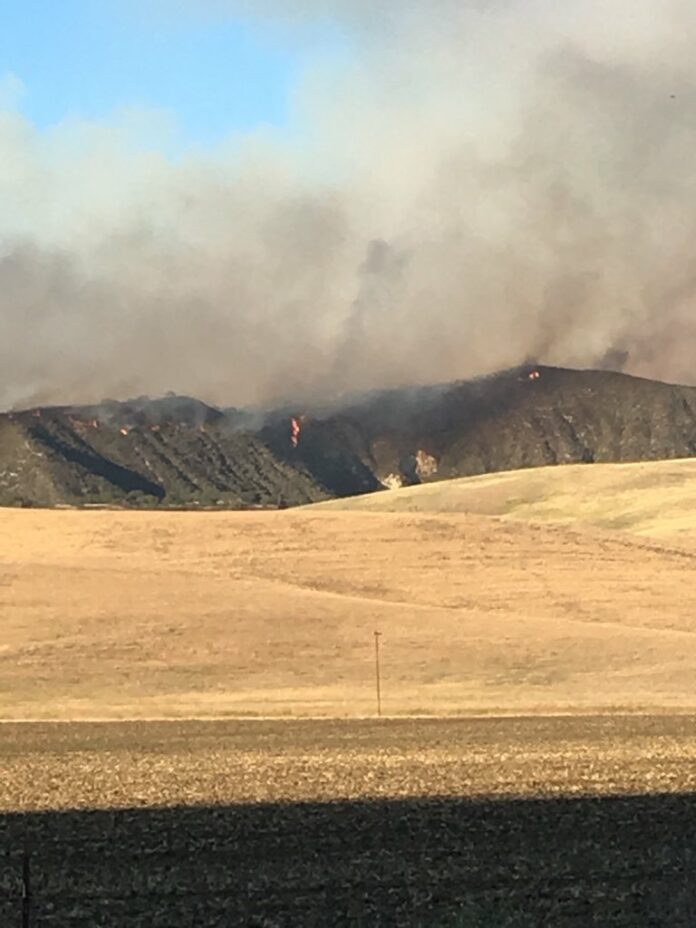Residents with sensitive respiratory systems can breathe a sigh of relief, at least for now.
Air quality measured as “good” as of Thursday in the Hollister area, according to the Air Quality Index and an air quality planner with the Monterey Bay Air Resources District.
The Monterey Bay region as a whole has good air quality, although the Santa Cruz and King City areas had moderate air quality measured as of Thursday morning, said Chris Duymich, an air quality planner with the Monterey Bay Air Resources District.
“Presently right now, everybody is in the green, including Hollister, with the exception of King City,” Duymich said. “Whatever was in the air started shifting south.”
Air quality these days has a tendency to shift based on smoke and wind levels. Much of the poor air quality in recent weeks has related to fires happening to the north, although several of those larger fires – such as the massive Carr Fire in Shasta County – have been contained.
Poor air quality is particularly worrisome for sensitive populations such as children, the elderly or those with compromised respiratory systems. During periods with poor air quality, residents are advised to minimize their time outdoors to avoid health problems.
It’s been a particularly active fire season in Northern California, Oregon, Washington and even British Columbia, with smoke from the fires eventually finding its way south to this region, Duymich said. Depending on the weather conditions, air quality can shift from one period to the next, with two or three days of good air quality often followed by several days of moderate or poor air quality, she said.
As for the notion that the additional smoke in the air is affecting weather, particularly temperatures, that’s not really the case, Duymich said. So the fires aren’t likely a reason explaining the relatively moderate temperatures San Benito County has experienced so far in early September, when Hollister historically has hot weather and 100-degree days aren’t that uncommon.
San Benito County isn’t out of the woods yet as it relates to the smoky conditions, though, as the fire season has continually stretched out further and further. While it used to be a three-month problem, the fire season is now closer to a nine-month issue for California, Duymich said.
“Little by little, it’s becoming a year-round problem,” she said.
It often takes the smoke from fires several days to reach another region. That explains why this region was inundated with smoke a little over a week ago, and why there’s another patch of smoke headed south that may arrive in the coming days. Duymich noted how those conditions may remain in the upper atmosphere and could end up having little impact here, though.
Looking ahead in trying to detect issues related to smoky air, outside of sensitive populations, “you pretty much are your best detector,” she said, adding that if someone can smell smoke, that’s the best indicator of an issue.
So if your eyes feel drier than normal or or sinuses are acting up, it may be an air quality issue related to the fires, she confirmed. That’s when home ventilation systems or air purifiers can come in handy.
To get updates on local air quality, go here.
For information provided by San Benito County Public Health Services in August about the fires and air quality, see below:
California is experiencing unprecedented wildfires this summer affecting large parts of the State. Although San Benito County has not been directly impacted by major wildfires this season, wildfire smoke can travel hundreds of miles and affect large geographic areas. In addition, because it is summer time, many families are traveling to areas affected by the fires. Air quality and smokiness can change quickly. Families should consult the air quality of their destinations when making plans.
Wildfire smoke contains very small particulate matter that is breathed deep into the lungs. This form of air pollution is linked to a number of health problems, including coughing, wheezing, reduced lung function, asthma attacks, heart attacks and strokes. It can have long-term health impacts. Additionally, wildfire smoke may contain unknown chemicals and particles from manmade materials that have burned (homes, cars, etc.).
Some groups of people are more sensitive to the adverse health effects of wildfire smoke. They include:
- People with cardiovascular disease (diseases of the heart and blood vessels) • people with lung disease, including asthma and COPD
- Babies, children and teenagers
- Older adults
- Persons with obesity or diabetes
- Expectant mothers.
Children are especially at risk for health effects from exposure to wildfire smoke and ash, mostly because their lungs are still growing. Children who breathe in wildfire smoke and ash can have chest pain and tightness; trouble breathing; wheezing; coughing; nose, throat, and eye burning; dizziness; or other symptoms. Children with asthma, allergies, or chronic health issues may have more trouble breathing when smoke or ash is present. Note that some areas are also affected by extreme heat and people who are not acclimated to the higher temperature, or are dehydrated, may experience additional stresses on their heart and lungs.
What should we do?
San Benito County Public Health Services recommends:
- Avoid areas with poor air quality due to wildfire smoke, especially if traveling with people in the sensitive groups above;
- If you are in a location with poor air quality, monitor conditions frequently and follow EPA guidelines to reduce smoke exposure and reduce health consequences;
- Monitor air quality (Air Quality Index) at EPA AirNow at <a href=”https://www.airnow.gov/index.cfm?action=topics.smoke_wildfires”>https://www.airnow.gov/index.cfm?action=topics.smoke_wildfires</a>
- Review attached EPA General Fact Sheet and EPA/PEHSU guidelines for children
For more information on the services Public Health Services provides, please call (831) 637-5367 or go to San Benito Public Health Services website at http://hhsa.cosb.us/publichealth/.
-Kollin Kosmicki




